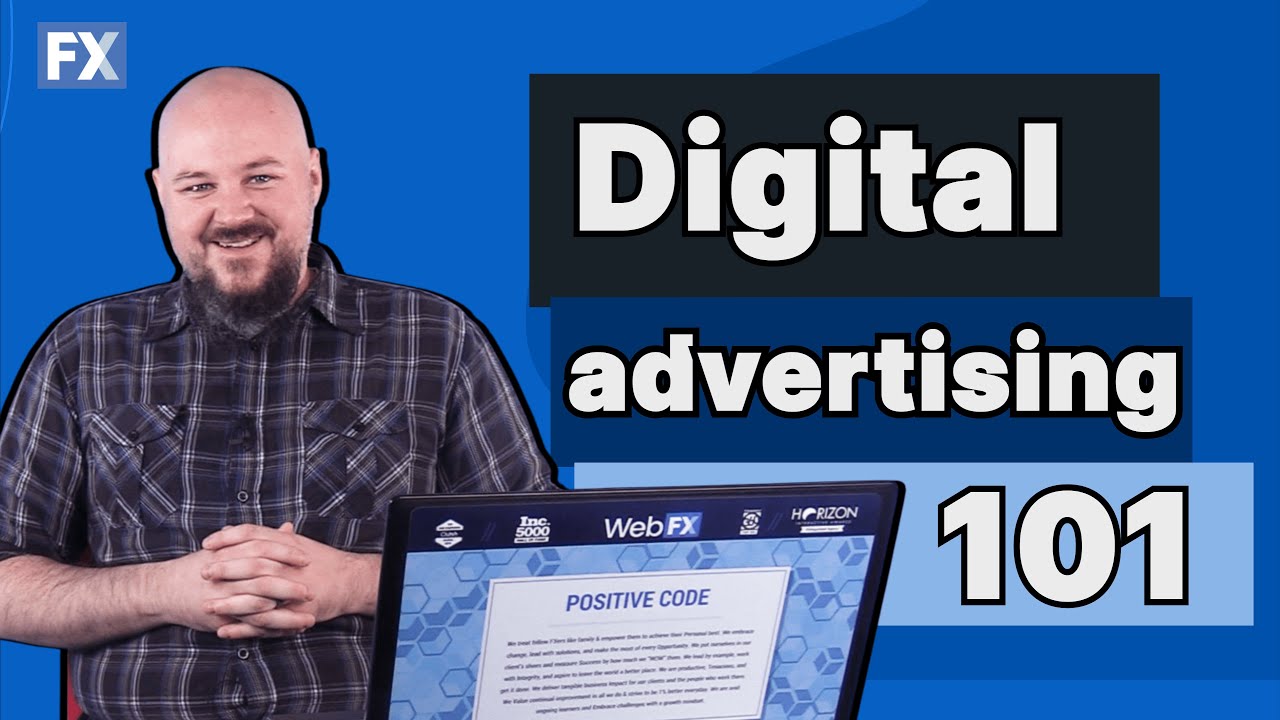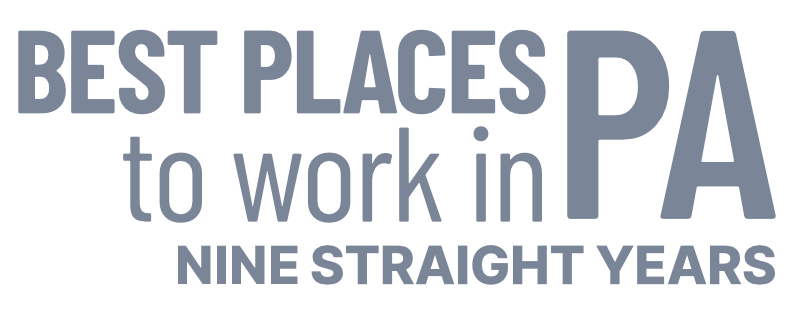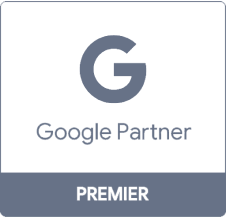- Home
- Digital Advertising
- Glossary What Is Digital Advertising?
What Is Digital Advertising? Definition, Types, and Examples
Digital advertising is a marketing strategy that involves launching advertisements through online channels, like websites, social media, search engines, and more, to promote your brand and products or services.
What is digital advertising?
Digital advertising is a marketing strategy that involves launching advertisements through online channels to promote your brand, products, or services
Understanding digital advertising can help you create a campaign tailored to your company. In this digital advertising 101 guide, we’re diving into everything you need to know about advertising online.
Here’s a quick overview of everything we’ll cover:
Digital Advertising 101
Keep reading to learn more digital advertising basics!
Questioning the quality of your SMB’s PPC performance?
Get your FREE PPC audit from WebFX today!

What is digital advertising?
Digital advertising is a marketing strategy that involves launching advertisements through online channels, like websites, social media, search engines, and more, to promote your brand and products or services.
How does digital advertising work?
Digital advertising works by targeting specific users who are most likely to be interested in your advertisement. The steps below outline how it works and how companies get started with digital advertising.
Selecting a channel
Selecting a channel by first selecting an online channel that you want to promote your business on. You can launch ads on search engines like Google, social media platforms such as Facebook or Instagram, other websites, and more.
Choosing an ad format
Once you’ve decided on your online channel, the next step is to choose your ad format. Depending on your online channel, you will have different ad formats to choose from.
For example, if you launch an ad on Google, your ad will look like a regular search result. And if you launch an ad on social media, you can choose from video or image ads.
Creating a budget
You’ll also need to decide how much you want to pay for your ad. In most cases, you’ll pay a fee for each time someone clicks on your ad or performs your desired action.
Outline your audience
Now that you’ve chosen your ad format, your next step is to set your audience targeting features. These features help you ensure that your ads will reach the people most likely to purchase your products or services.
You can target users based on their:
- Age
- Location
- Job title
- And more
Then, all that’s left is to launch your ad and monitor your results!
What are the differences between digital advertising and traditional advertising?
Digital advertising shares a few similarities with traditional advertising.
Like traditional advertising, it promotes your business, products, and services to generate brand awareness, sales, and more. It leverages digital, rather than traditional advertising channels, however. Instead of billboards and magazines, your ads appear on Google, Facebook, YouTube, and more.
Online advertising also comes with a massive amount of data. You can track the performance of your campaigns in real-time, for example. In addition, you can learn about the demographics, interests, and habits of the people viewing and interacting with your ads.
In comparison, traditional advertising delivers the bare minimum when it comes to data. You don’t have immediate insight into your campaign’s performance. A billboard, for example, may provide your team with almost zero data.
That’s why digital advertising often seems like a smart alternative to traditional advertising.
Traditional advertising vs. Digital advertising
- Digital advertising harnesses digital channels — like social media — to find and attract customers
- Traditional advertising uses physical advertising methods — like billboards — to reach people
- Digital advertising offers more data for tracking your campaign
- Traditional advertising provides little to no data for tracking your campaign
What are the different types of digital advertising?
No guide to digital advertising basics would be complete without diving into the different types of digital advertising.
There are five main types of online advertising:
- Search advertising
- Display advertising
- Social media advertising
- Online streaming advertising
- Influencer advertising
Let’s look at each one below!
1. Search advertising
Today, 80% of shoppers start their product research online. Many go to their favorite search engine, like Google, Bing, or Yahoo!, to get started. With search advertising, your company can promote your products and services on these platforms.
Search ads appear at the top and bottom of search engine results pages (SERPs). You can identify them by the “sponsored” tag above the result.
Here’s an example of a search ad in action:
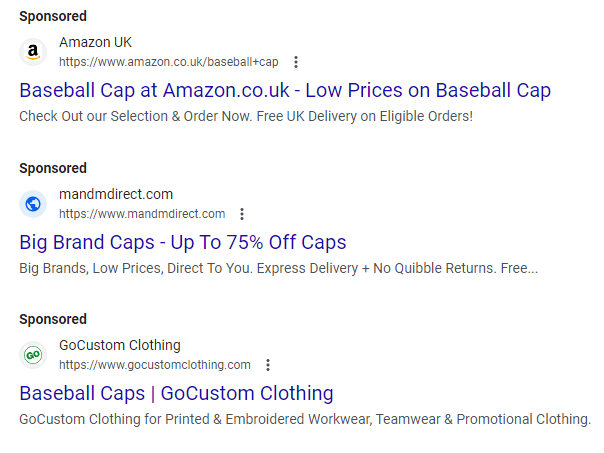
When you create ads for search, you target specific searches or keywords. For the best results, your business should target transactional keywords, which means the searcher wants to buy something, like landscaping services for their business or emergency heating and cooling services for their home.
If you’re looking to reach users in earlier stages of the buying funnel, it’s more cost-effective to use digital marketing. You can use content marketing and search engine optimization (SEO), for example, to appear at the top of relevant, informational searches related to landscaping or HVAC upkeep.
You can even use digital or pay-per-click (PPC) advertising to support your other online marketing strategies. PPC, for instance, is an excellent partner to SEO. While you’re working on increasing your organic rankings via SEO, PPC helps your business establish an immediate presence in search results.
2. Display advertising
A significant percentage of users (90%, in fact) credit video for helping them make a purchase decision. That’s why display is becoming a core part of digital advertising.
With display advertising, your ads appear across affiliate websites, which can include YouTube. You can launch a display advertising campaign with search engines like Google, Bing, and Yahoo!. Here’s one example form a recipe site:

When you advertise via display channels, you can incorporate compelling images and videos into your ads. For many businesses, Google is the preferred choice because its display ads appear on YouTube.
Google’s ownership of YouTube is significant, as 80 percent of people admit to switching between search and video channels when researching a product or service. That means your company could reach users on both pivotal channels.
3. Social media advertising
Companies can also take advantage of digital advertising on social media networks, which include:
For all the types of social media, your business can create text, image, and video ads. If you decide to use social media for promoting your company, try to build video or image ads, as these tend to perform better than text ads: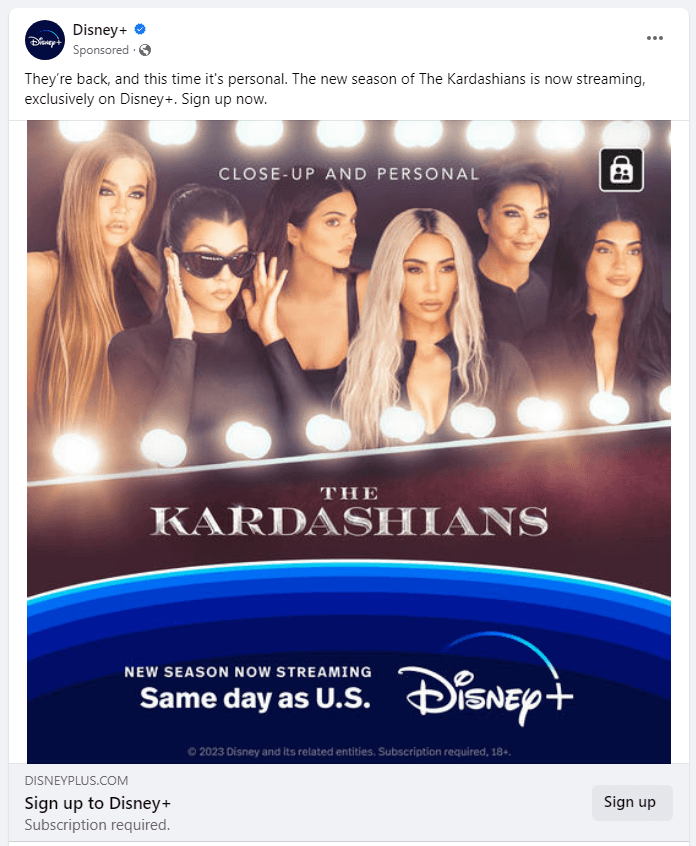
As a digital media advertising channel, social media also offers your business access to additional bidding options. For example, on Twitter, you can use cost-per-follow (CPF) if you’re looking to earn more followers. Or, you can use cost-per-send (CPS) on LinkedIn if you want to reach passive candidates.
4. Online streaming advertising
Also called over-the-top (OTT) or connected TV (CTV) advertising, online streaming ads are digital video advertisements that appear on smart TVs and video streaming platforms like Hulu, Netflix, and YouTube.

Online streaming ads are a great way to reach your target audience while they watch their favorite shows and movies. These ads can play before, during, or after videos and can vary in length from anywhere from five seconds to several minutes long.
5. Influencer advertising
Businesses that invest in social media advertising also partner with influencers on various social media networks. Influencers carry immense value because they have the trust and respect of your target audience, which means they can recommend products or services with success.
Compared to other digital advertising channels, influencers adopt a different pricing model. For example, an influencer may have a flat-rate fee based on their number of followers or engagement rates on posts. Or, they may charge your business on the performance of your sponsored posts.
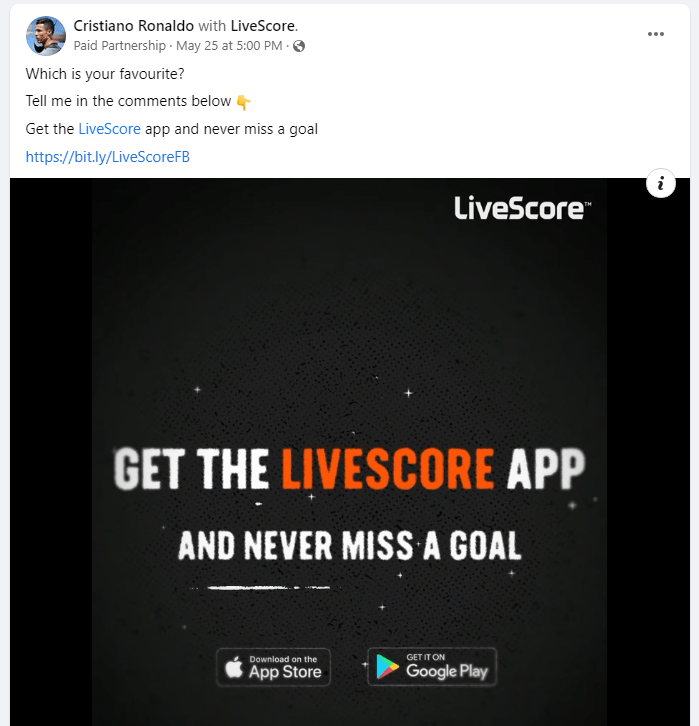
As an example, influencers on Instagram generally follow one of two pricing models.
- $10 per post, per 1000 followers
- $250 to $750 per 1000 post engagements
Many companies prefer influencers that charge based on post engagement. That’s because post engagement tends to provide a more accurate view of that influencer’s audience. Plus, you want users to interact with your sponsored post because that moves them down the funnel.
5 key benefits of digital advertising
Now you know what digital advertising is, how it works, and what kinds of ads are available. Let’s dive into digital advertising benefits.
There are several benefits of digital advertising that can help your business drive revenue and fuel growth, including the following:
- Digital advertising reaches your target audience
- Digital advertising provides measurable results
- Digital advertising supports every ad budget
- Digital advertising offers options when it comes to strategy
- Digital advertising delivers instant results
1. Digital advertising reaches your target audience
Purchase a billboard, and you can hope that your target audience not only sees it but also acts on it. There are zero guarantees, though, especially when you’re targeting drivers inside and outside your target audience.
A digital ad campaign, however, is the exact opposite.
With digital advertising, you’re reaching (and directing your ad spend) towards the people with actual interest in your business. Using targeting options like location, interests, and behavior, you can ensure your ads focus on the people that matter most to your business.
Not to mention, with online digital advertising, you’re reaching people when they want to be reached.
Instead of trying to get their attention on the highway, you’re connecting with them when they’re searching for your business or researching products in your industry. Digital advertising pulls people to your company versus pushing them towards it.
2. Digital advertising provides measurable results
Whether it’s offline or online, you want to track your advertising initiatives.
Otherwise, how can you prove that your strategy worked?
Luckily, it’s easy to track and monitor your online digital advertising efforts. Digital ad platforms, like Google Ads, often monitor your campaigns for you. Just log into your account and view your data. You can even export it into reporting tools like Google Data Studio for review.
Digital ad campaign data not only helps your team show the results of your strategy but also find opportunities for improvement. For example, if you have a low-performing ad, you could brainstorm new copy, images, and more to increase its performance.
3. Digital advertising supports every ad budget
Whether you’re operating a small business or massive enterprise, you can use digital advertising.
Compared to traditional advertising, online digital advertising allows your business to create a budget. You don’t have to fulfill specific budget requirements to launch a billboard or air a television commercial. Instead, you decide what you’ll spend (and what you’ll pay) for your ads.
Many online advertising platforms also prevent pay-to-win schemes.
A company, for example, can’t place a higher bid to earn the best ad placement. They also need to deliver a relevant ad and excellent user experience. This bidding model allows all businesses to achieve excellent ad placements without bidding an obscene amount.
4. Digital advertising offers options when it comes to strategy
No matter your business, you want options when it comes to advertising, whether offline or online.
With digital advertising, you have options. You can launch ads on Google, Facebook, or YouTube. Not to mention, you can choose between text, image, and video ads. Plus, you can customize your ads with advanced targeting options, including remarketing.
Your company can also use online digital advertising for a variety of goals, including:
- Building brand awareness
- Driving product sales
- Increasing contact requests
- And more
All these options provide your team with flexibility and versatility when it comes to advertising.
5. Digital advertising delivers instant results
When your company adopts digital media advertising, you can expect results instantly.
As soon as you launch your paid campaigns, you can start receiving clicks, orders, phone calls, and more. You can also track and associate each of these actions with your campaigns. With that kind of tracking, your company can easily see the impact of digital advertising on your business and its bottom line.
In comparison, online marketing can take longer to see results.
If you use a strategy like content marketing, for example, it could take several months before you see traffic increases, new leads, or product purchases. That’s why many businesses will use digital marketing strategies in coordination with online advertising ones.
Digital advertising examples to inspire your campaign
Browse the digital advertising examples from different channels below to get some inspiration for your ad campaign!
1. Google Ads example
Since Google processes 99,000 search queries every second, it’s a great place to start with digital advertising. Check out this example of a search ad on the Google Ads platform:

2. Facebook ad example
With carousel ads, users can scroll through multiple images to view multiple products or services. This Facebook carousel ad from New Look highlights some of their new produts with images and text combined:

3. Instagram ad example
Instagram ads appear in the Stories section or as posts directly in the users timeline. Check out this example of an Instagram ad from Disney Plus below:
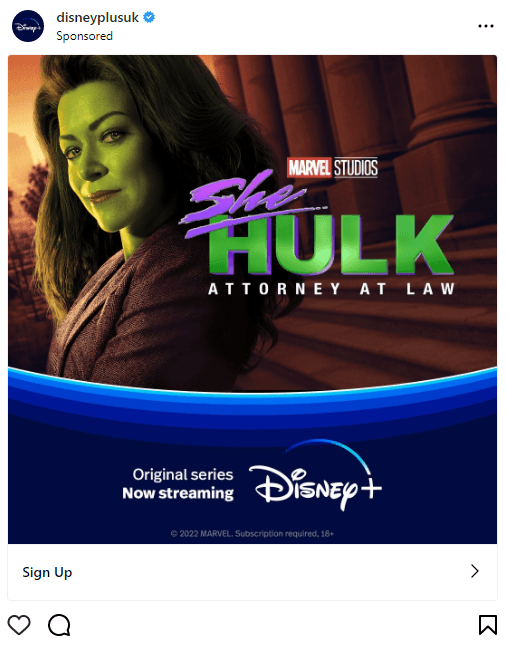
4. YouTube ad example
YouTube ads appear before or after a video, or in the middle as a break. In this YouTube ad example, the video ad plays before the user can watch their chosen video and can be skipped after five seconds:
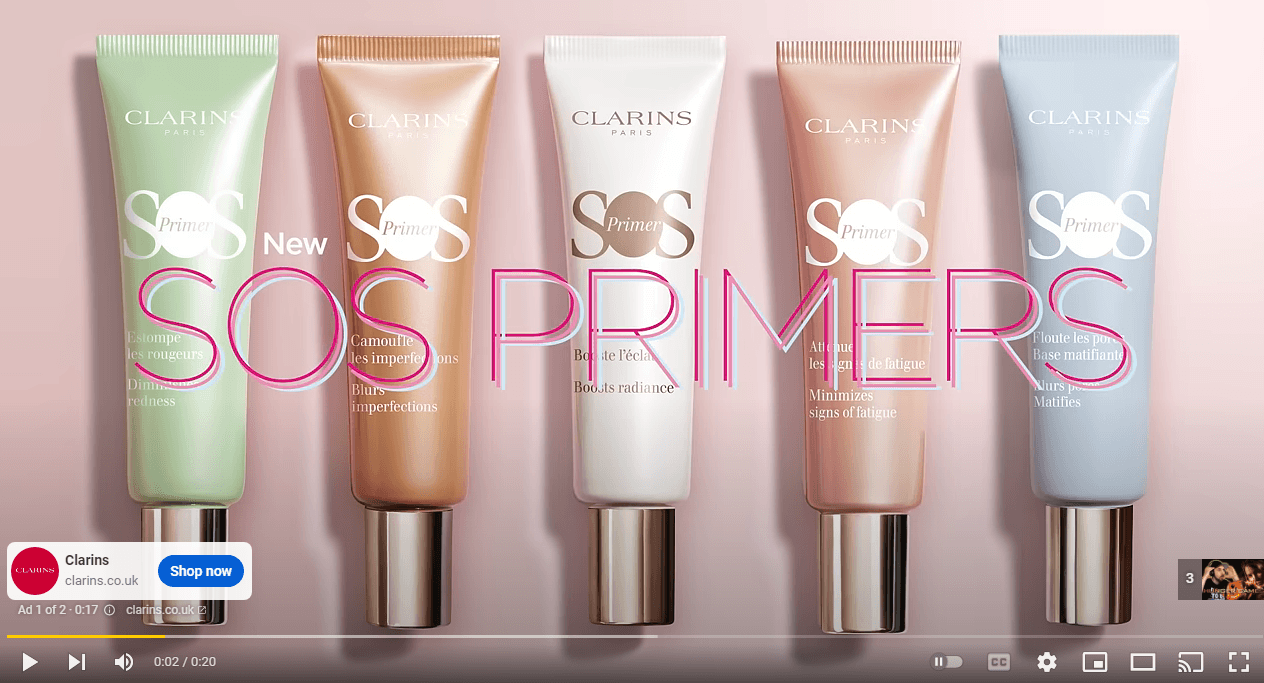
5. Display ad example
Display ads can show up on any site that supports them. This display ad example is a banner ad that appears at the top of a website’s homepage.

6. Influencer ad example
In this influencer ad example, Cristiano Ronaldo highlights his partnership with Herbalife to his audience to encourage his followers to purchase from them.
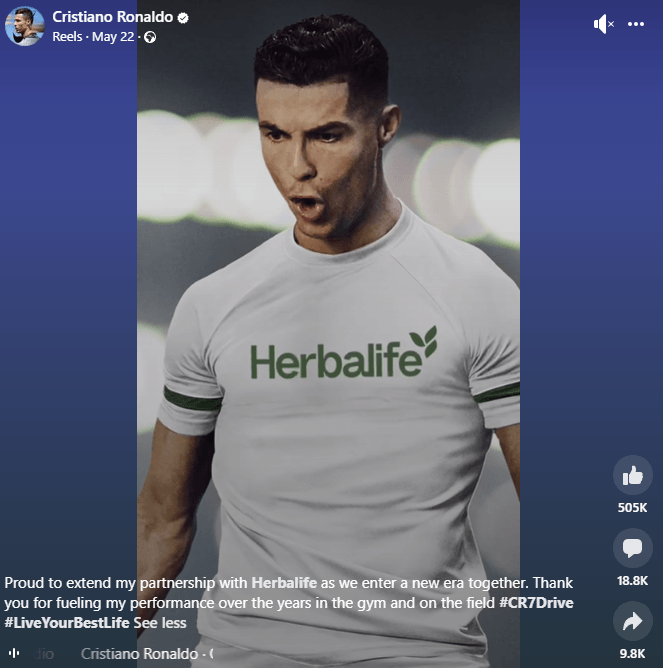
Digital advertising tips and best practices for a successful campaign
When it comes to digital advertising 101, you’ll want to know some best practices to ensure your ad campaigns successfully drive leads and revenue for your company.
Here are our top four digital advertising tips to help make your ads a revenue-driving success:
Let’s dive in below!
1. Make your offer compelling
While your business knows what makes your product or service unique, your target audience doesn’t. Use your ads to showcase the unique benefits of your goods. It’s also essential for your team to convey these advantages in a way that resonates with your market.
For example, if you’re a landscaping company, you must ask what your audience wants from a landscaper. Do they want non-intrusive service, one-of-a-kind gardensor something else? Research your audience online to determine what they want in a landscaper.
You can also promote savings, like a free quote, to make your offer even more compelling.
2. Write some killer ad copy
If you want users to interact with your ads, whether across search, social media, or video, write some snappy ad copy. As many ad providers, like Google, maintain character limits on ad copy, you need short yet compelling text to hook your audience.
Even if you’re investing in display ads, your team needs to develop ads that grab your audience’s attention. You can use a compelling offer or emotional appeal to get users to watch your video or click on your ad.
Appeal to your audience’s interests, needs, and pain points to create successful ad copy and creatives.
3. Get custom creatives
A lot of businesses decide to build creatives for digital advertising in-house. This move makes sense if you’re a company with an in-house team of designers and videographers. Otherwise, it’s a decision that can cost your business money.
While you may pay more upfront for graphics and videos from professionals, custom creatives can help the long-term performance of your ad. They show your company’s professionalism and quality, which can serve as trust signals for users in your target audience.
Invest in top-notch creatives upfront to get the most from your digital advertising strategy.
4. Target the dream customer
Companies often start with a broad target audience with online digital advertising. This approach can result in a ton of ad clicks and even conversions, but rarely achieve your overall goal of working with your ideal client or shopper.
That’s why your business should focus your ads on your dream customer. With digital advertising, your company can access advanced target options, which can help your team reach the consumers you want. While you may see fewer clicks and conversions, you will notice an increase in customer quality.
Plus, this approach saves your business money as you’re only paying for the users that matter.
If you’re still confused on some of the marketing terminology, check out our blog post!
Traffic attracted through PPC advertising yields 50% more conversions than organic advertising.
Are you leveraging PPC in your marketing efforts? Let’s get started.
View the Guide
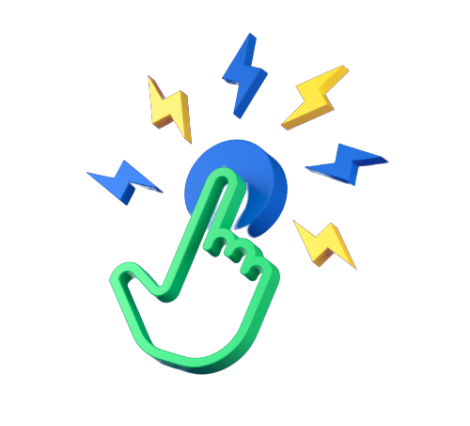
Need some help with online digital advertising?
Even though digital advertising offers immense opportunity, launching and maintaining a successful campaign is not easy. It’s time-consuming, too. That’s why businesses partner with marketing and social media agencies that specialize in online digital advertising, like WebFX.
If you’re looking for a custom strategy from a trusted agency with more than 1,100 testimonials from satisfied clients, contact WebFX. We feature some of the industry’s most advanced marketing technology and an unparalleled client recommendation score (it’s 488% higher than the industry average).
Talk with an award-winning strategist by contacting us online or calling 888-601-5359!
Digital vs. Traditional Marketing
Download this guide to understand the key advantages, costs, and opportunities for each to decide which is best for your marketing strategy!
Get My Free Guide
Table of Contents
- What is Digital Advertising?
- How Does Digital Advertising Work?
- What Are the Differences Between Digital Advertising and Traditional Advertising?
- What Are the Different Types of Digital Advertising?
- 5 Key Benefits of Digital Advertising
- Digital Advertising Examples to Inspire Your Campaign
- Digital Advertising Tips and Best Practices for a Successful Campaign
- Need Some Help with Online Digital Advertising?
Related Resources
- What is Advertising? Definition and 2024 Guide
- What is an Ad Exchange? (+3 Types of Ad Exchanges)
- What is an Ad Network and How Does It Work?
- What is Behavioral Retargeting?
- What is Direct Response Marketing? Your 2024 Beginner’s Guide
- What is Display Advertising?
- What is Dynamic Keyword Insertion (DKI)? Everything You Need to Know in 8 Minutes
- What is Ecommerce Digital Advertising and How Does It Work?
- What is Facebook Advertising? Everything You Need to Know
- What is Real-Time Bidding? Beginner’s Guide to RTB
Marketing Tips for Niche Industries
- Tourism/hospitality Statistics
- Treat More Patients with Healthcare Marketing Services
- Urgent Care Marketing Ideas: 5 High-ROI Tactics
- WebFX: Your Education Digital Marketing Agency
- Why Auto Part Retailers Need Digital Marketing
- Why Digital Marketing is Essential for Auctioneers
- Your Guide to Digital Marketing for Exercise Equipment Companies
- Vision Care Industry Statistics
- 10 Best Orthodontist Marketing Ideas to Earn More Patients
- 10 Digital Marketing Strategies for the Heavy Equipment Industry

